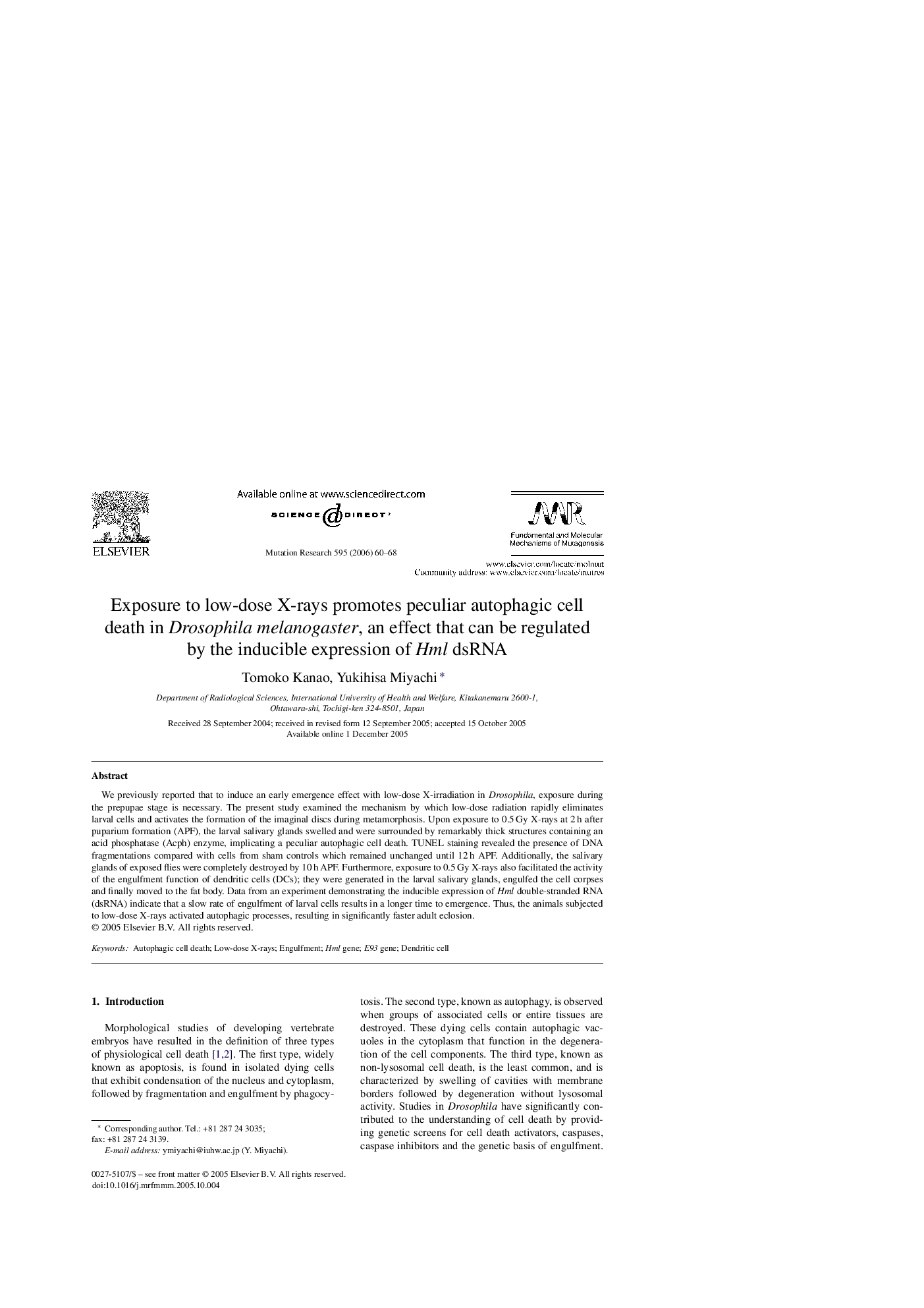| Article ID | Journal | Published Year | Pages | File Type |
|---|---|---|---|---|
| 2147660 | Mutation Research/Fundamental and Molecular Mechanisms of Mutagenesis | 2006 | 9 Pages |
We previously reported that to induce an early emergence effect with low-dose X-irradiation in Drosophila, exposure during the prepupae stage is necessary. The present study examined the mechanism by which low-dose radiation rapidly eliminates larval cells and activates the formation of the imaginal discs during metamorphosis. Upon exposure to 0.5 Gy X-rays at 2 h after puparium formation (APF), the larval salivary glands swelled and were surrounded by remarkably thick structures containing an acid phosphatase (Acph) enzyme, implicating a peculiar autophagic cell death. TUNEL staining revealed the presence of DNA fragmentations compared with cells from sham controls which remained unchanged until 12 h APF. Additionally, the salivary glands of exposed flies were completely destroyed by 10 h APF. Furthermore, exposure to 0.5 Gy X-rays also facilitated the activity of the engulfment function of dendritic cells (DCs); they were generated in the larval salivary glands, engulfed the cell corpses and finally moved to the fat body. Data from an experiment demonstrating the inducible expression of Hml double-stranded RNA (dsRNA) indicate that a slow rate of engulfment of larval cells results in a longer time to emergence. Thus, the animals subjected to low-dose X-rays activated autophagic processes, resulting in significantly faster adult eclosion.
